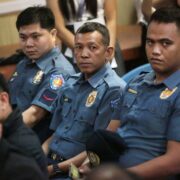A Mansion House visit

Rewriting Philippine history is not exclusive to academics. Politicians indulge in it too, when they name or rename the streets that define us. Take Arsenio H. Lacson street, named after the feisty mayor of Manila who served from 1952-1962, that connects Sampaloc to Nagtahan and Pandacan.
People born in the last century, like me, remember it as “Por-Bes,” named after William Cameron Forbes who served as the United States governor general from 1909-1913. But Forbes has not been completely erased from the landscape because of Forbes Park in Makati. While Forbes Park remains the premiere gated community in the country, its reputation is far from aspirational in some sectors. Taipan Lucio Tan used to refer to it, in jest, as “Pobres Park,” referring to the number of mortgaged, hard-to-sell properties, in the enclave.
Forbes came to mind recently when I went on a tour of “Mansion House,” the official summer residence of American governors general and later Philippine presidents. Many years ago, I thought aloud, “Isn’t Mansion House redundant? Aba! Mansion na, House pa?” I was glad when the giant Instagrammable sign on its lawn declared, “The Mansion.”
While grammatically correct and tighter to an editor’s eye, I found that Forbes had a vacation home in the US called “Mansion House.” From a 1907 publication, I learned that Mansion House was built on the highest site in Baguio, and that Governor Forbes’ summer residence was called “Topside.”
I had never been inside Mansion House and always saw it from outside its elegant wrought iron gate. It is open to the public now, thanks to the initiative of First Lady Liza A. Marcos, as a museum of Philippine presidents and the presidency. You can register for a tour slot online, but none were available and we were only in Baguio for two nights, so we tried our luck as “walk-in” patrons. Being seniors must have helped because everywhere we went, the young staff were courteous and attentive. This is a welcome change from being made to wait or asked to return another day at government offices.
After registration, where ID details were taken down and a contact number requested, we boarded a golf cart that took us up the long driveway where we were met and told to catch up with the 9 a.m. tour group. We were reminded that photography is prohibited in the exhibit halls, a policy that has to be relaxed because there is so much historical data on the walls. Interested patrons should be allowed to take pictures not just of the wall texts, but the few presidential memorabilia on display.
The first room was an introduction to Mansion House and Baguio. Archival photographs brought visitors back to the time when it was a colonial hill station. One must remember that in an age without air-conditioning, the heavyweight first civil governor William Howard Taft suffered in Manila’s heat. Baguio as a “summer capital” was just that: in the hot months, the whole government transferred and operated there. This explains why we have Cabinet Hill with cottages for all department secretaries. Teachers Camp was for training, meetings, as well as rest and recreation. Today, only the Supreme Court comes up for summer sessions.
From the first room, one proceeds along a narrow hall lined with portraits of all the First Ladies of the Philippines, from Hilaria Aguinaldo to Liza Marcos. While students are introduced to the sequence of Philippine presidents in Araling Panlipunan, first ladies are only remembered by the bright ones who compete in quiz bees. The list goes: Hilaria Aguinaldo, Aurora Quezon, Paciencia Laurel, Esperanza Osmeña, Trinidad Roxas, Victoria Quirino (not a spouse but a daughter because Elpidio Quirino was a widower), Luz Magsaysay, Leonila Garcia, Eva Macapagal, Imelda Marcos, Amelita Ramos, Loi Ejercito, Jose Miguel Arroyo (the only thorn among the proverbial roses because the President was a woman), and Liza Marcos. There were three vacancies: Corazon Aquino was a widow and her son Benigno S. Aquino III was a bachelor so they both went solo and did not designate a person to fill the role. With Rodrigo Duterte, it was complicated, no one was designated.
The rest of the galleries cover each president from Aguinaldo to Marcos Jr. Wall texts provide: biographical details, term of office, significant achievements, a portrait, quotable quote, and a facsimile signature. In vitrines are photographs and memorabilia. Our tour guide showed public history in practice, making each president human in her spiel. My only problem was that in the timeline for Ferdinand E. Marcos Sr., there was no reference to the 1986 people power that led to his “exile.” Since Feb. 25 and Aug. 21 remain holidays under the second Marcos administration, curators should have taken the cue and simply stated fact instead of inviting criticism through a glaring omission.
—————–
Comments are welcome at aocampo@ateneo.edu
Ambeth is a Public Historian whose research covers 19th century Philippines: its art, culture, and the people who figure in the birth of the nation. Professor and former Chair, Department of History, Ateneo de Manila University, he writes a widely-read editorial page column for the Philippine Daily Inquirer, and has published over 30 books—the most recent being: Martial Law: Looking Back 15 (Anvil, 2021) and Yaman: History and Heritage in Philippine Money (Bangko Sentral ng Pilipinas, 2021).


















